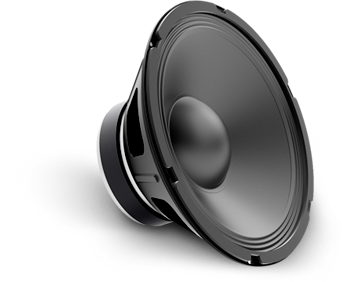College campuses everywhere almost every other person has headphones hanging down from their ears. At some point you can even hear the music they are listening too while they pass. I for one am guilty of this. I love music and I blast it in my headphones. But recently I went to the Zedd True Colors Concert at the Bryce Jordan Center and after hours of insanely loud but great music I could barley even hear coming out of the BJC. After this experience I can only imagine the long term effects of what loud music can do and for this post I am going to find out.
To begin I had to find out some sort of evidence that this noise issue is an actual concern. After the conce rt I experienced Noise-induced hearing loss (NIHL) and it occurs when tiny sensory hair cells in our inner ears are damaged by noises that are too loud and that last for too long. After two minutes of a Google search I came across the American Osteopathic Associations website on this exact issue. They quoted, “Today, 1 in 5 teens has some form of hearing loss – a rate about 30% higher than it was in the 1980s and 1990s – which many experts believe is due, in part, to the increased use of headphones.” Now that is some serious data. One in five teens is a substantial number. But with one and five teens how serious can this be? According to James E. Foy, DO, an osteopathic pediatrician from Vallejo, Calif., “listening through headphones at a high volume for extended periods of time can result in lifelong hearing loss for children and teens,” Which leads to problems with comprehension and speech. With many teens advancing into highly academic parts in their lives this isn’t an issue that anyone would like to encounter.
rt I experienced Noise-induced hearing loss (NIHL) and it occurs when tiny sensory hair cells in our inner ears are damaged by noises that are too loud and that last for too long. After two minutes of a Google search I came across the American Osteopathic Associations website on this exact issue. They quoted, “Today, 1 in 5 teens has some form of hearing loss – a rate about 30% higher than it was in the 1980s and 1990s – which many experts believe is due, in part, to the increased use of headphones.” Now that is some serious data. One in five teens is a substantial number. But with one and five teens how serious can this be? According to James E. Foy, DO, an osteopathic pediatrician from Vallejo, Calif., “listening through headphones at a high volume for extended periods of time can result in lifelong hearing loss for children and teens,” Which leads to problems with comprehension and speech. With many teens advancing into highly academic parts in their lives this isn’t an issue that anyone would like to encounter.
In order to be aware and not only help my self but my friends I found what volume is actually too loud. Sound is measured in units called decibels. Decibel levels begin at zero which equal to about total silence. According to the National Institute of Health a whisper is 30 decibels and a normal conversation is 60 decibels. Any increase by decimals of ten is the equivalent of ten times the previous amount. For instance the sound of an ambulance siren at 120 decibels is about 1 trillion times more intense than the weakest sound our ears can hear. Sounds that reach 120 decibels are painful to our ears at close distances. So in relation to NIHL, the damage done to your ears has three variables, time exposed, how high in decibels the sound you are being exposed to is, and distance from source. Level of decibels and time exposed for hearing loss to occur are shown in the inserted picture.  Once you reach around 100 or so dB the amount of time you should be prolonged to the sound rapidly decreases. This is highly concerning numbers as most mp3 players can reach up to 120 dB. This is extremely dangerous for prolonged exposure. With this information being know a great tip from the AOA is that you should only use MP3 devices at levels up to 60% of maximum volume for a total of 60 minutes a day. But as you increase the volume remember to just shorten the amount of exposure time and you should be fine.
Once you reach around 100 or so dB the amount of time you should be prolonged to the sound rapidly decreases. This is highly concerning numbers as most mp3 players can reach up to 120 dB. This is extremely dangerous for prolonged exposure. With this information being know a great tip from the AOA is that you should only use MP3 devices at levels up to 60% of maximum volume for a total of 60 minutes a day. But as you increase the volume remember to just shorten the amount of exposure time and you should be fine.

I like to listen music through earphone, too. I also found out that before I can listen to music in a low volume. But when time past, I found out that now that volume is too low for me, and I need to raise the volume to listen to music clearly. I think it means I have to take more care of my ears now. We need to control the volume is a healthy range and have time limits. Here is the website I found talk about the Hearing loss and music